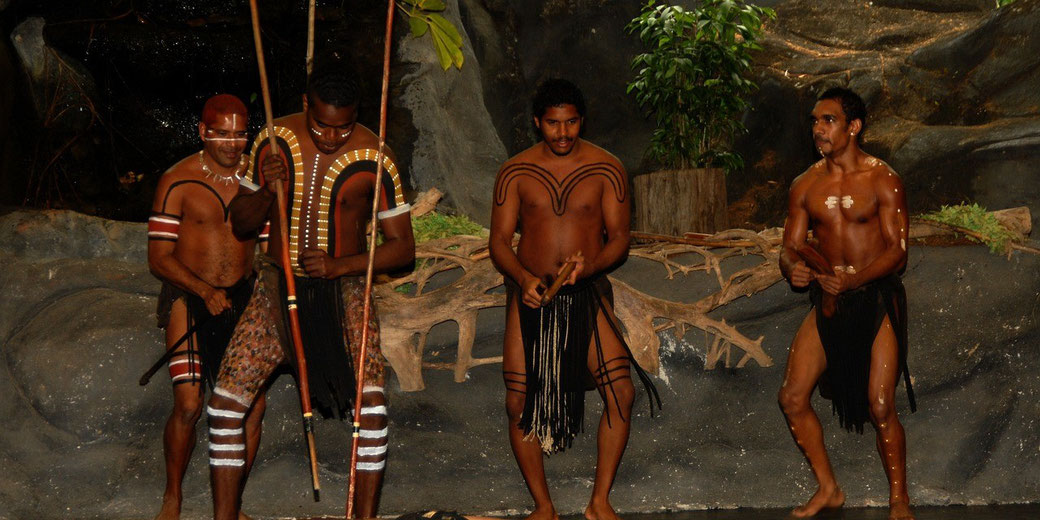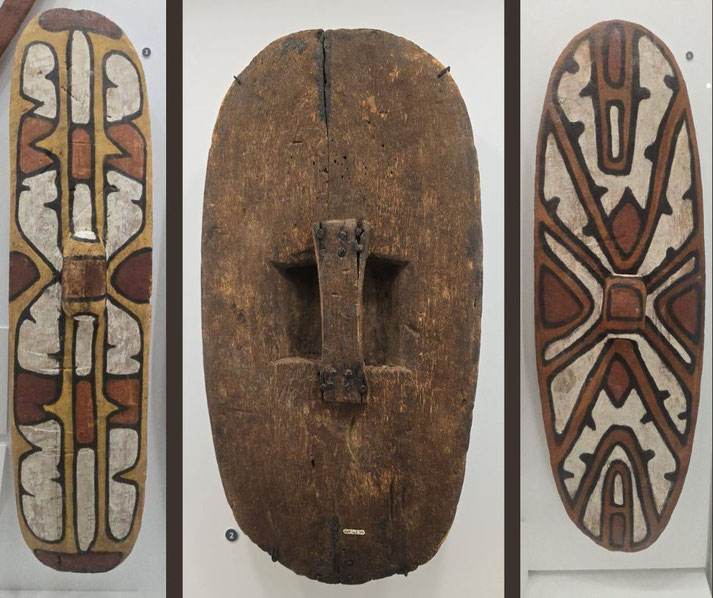Weapons and battle techniques of Indigenous Australians

The Indigenous Australians had a long history of warfare and conflict, long before the arrival of European colonisers.
Although there was no single Indigenous military force, some Indigenous communities developed unique weapons and battle techniques.
Traditional warfare in Australia
As with all human societies, there were frequent conflicts between Indigenous Australian groups, although they were not as large as those in European and other parts of the world.
Many of the battles were typically aimed to settle disputes rather than to simply cause casualties.
As far as we can tell, fighting among Indigenous Australian groups was generally over control of land, access to natural resources, personal issues, or even breaking sacred laws.
When battles did take place, the weapons and armour used could vary widely across regions.
For example, communities in Arnhem Land were known for crafting unique spear throwers, while the Pitjantjatjara people from Central Australia preferred to use heavy wooden clubs known as nulla-nullas.
Interestingly, in many Indigenous communities, warfare could also be ritual. In these cases, it took the form of ritual duels or formal conflicts that were used to confirm social roles.
Spears
Spears were a commonly used weapon among many Indigenous Australian communities, but they varied in length, weight, and design.
Some communities used light and agile spears for hunting and fishing, while others used heavier spears for warfare.
The Indigenous Australians were skilled at throwing spears, and they could be thrown with great accuracy and force.
Boomerangs
Boomerangs were used for hunting and as a weapon in warfare. Indigenous Australians had two types of boomerangs: the returning boomerang and the non-returning boomerang.
The non-returning boomerang, sometimes called a kylie, was used for striking a target and was used for both hunting and combat.
The returning boomerang was used as a distraction or to disarm an opponent.
However, it could also be used for hunting birds or in recreational contexts.
Shields
Shields were less common in Indigenous Australian warfare than in other parts of the world.
Groups in northern and central Australia were known to use them while others didn’t.
When in battle, they were helpful in deflecting spears, boomerangs, and other projectiles.
However, the shields varied in size and form depending on the community, but some were adorned with colourful designs.
For those who didn’t fight with shields, they relied on evasion to avoid harm.

Woomera
The woomera was a spear-throwing device used by Indigenous Australians to extend the range and force of their spears.
The term woomera originates from the Dharug language of the Eora people.
Typically, they were between 61cm (24in) and 91cm (36in) long and featured a hook at one end where the spear was placed.
The design could vary among different groups, with some being wide and bowl-like while others were narrow and flat.
Basically, its use allowed spears to travel farther with more force, which made it an effective hunting and combat tool.
They could also be a vital multipurpose tool and sometimes used to carry water or cradle an infant.
Ambush tactics
While they hid in the bush and waited for their enemies to pass, First Nations warriors could also used decoys to lure their enemies into traps and ambushes, and, when ready, they would launch a surprise attack.
In some regions, Indigenous Australians used fire as a battle tactic, strategically setting bushfires to drive enemies out of hiding places.
Use of controlled bushfires proved most effective when used in conjunction with their knowledge of the landforms to channel people into the areas they wanted.
War paint and markings
There is evidence that Indigenous Australians used war paint and markings for both cultural and spiritual purposes.
The war paint was made from natural materials and applied to the face and body in detailed designs.
Such markings were believed to give the wearer strength and protection in battle.
In a similar way, Indigenous men often intentionally scarred their skin. Use of intentional scarification commonly marked a rite of passage and indicated the transition from childhood to adulthood.
At its core, the process of scarification, seen as a preparation for the challenges of warfare, was meant to demonstrate a young man’s ability to endure pain.
As a result, it was a sign of strength and discipline, and those who did not show emotion were often regarded as more worthy members of their community.
However, scars could also indicate membership in a particular tribe or group, and they often carried symbolic meanings related to social, political, or religious roles within the community.
In some cultures, the scars were even believed to enhance spiritual protection in combat.
What happened when they fought Europeans?
Although Indigenous Australians did not have a single military force, they were skilled fighters that were able to use their knowledge of the land and their environment to gain an advantage in battle.
However, the arrival of British colonisers in 1788 brought dramatic changes to Indigenous conflict, as traditional warfare methods were no match for the muskets and cannons used by European forces.
Estimates suggest that between 20,000 and 30,000 Indigenous Australians were killed in conflicts with British settlers during the colonial frontier wars.
That is not to say that there were no effective warriors in the conflict. For example, Bidjigal Eora man Pemulwuy led a decade-long guerrilla resistance against British colonisers from 1790 to 1802.
He was able to use traditional Indigenous combat techniques and guerrilla tactics to effectively strike back against colonial encroachment.
Another key figure in Indigenous resistance was Bunuba-people guerrilla-war leader Jandamarra, who used his intimate knowledge of Bunuba country to evade and fight colonial forces against European settlers in the Kimberley region of Western Australia from 1894 to 1897.
What do you need help with?
Download ready-to-use digital learning resources
Copyright © History Skills 2014-2025.
Contact via email
With the exception of links to external sites, some historical sources and extracts from specific publications, all content on this website is copyrighted by History Skills. This content may not be copied, republished or redistributed without written permission from the website creator. Please use the Contact page to obtain relevant permission.





